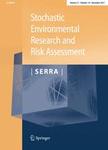版权所有:内蒙古大学图书馆 技术提供:维普资讯• 智图
内蒙古自治区呼和浩特市赛罕区大学西街235号 邮编: 010021

作者机构:Univ Regina Fac Engn & Appl Sci Regina SK S4S 0A2 Canada Univ Regina Inst Energy Environm & Sustainable Communities Regina SK S4S 0A2 Canada
出 版 物:《STOCHASTIC ENVIRONMENTAL RESEARCH AND RISK ASSESSMENT》 (随机环境研究与风险评估)
年 卷 期:2013年第27卷第6期
页 面:1493-1506页
核心收录:
学科分类:0830[工学-环境科学与工程(可授工学、理学、农学学位)] 08[工学] 081501[工学-水文学及水资源] 0815[工学-水利工程] 0714[理学-统计学(可授理学、经济学学位)] 0814[工学-土木工程]
基 金:Natural Sciences Foundation Natural Science and Engineering Research Council of Canada Program for Innovative Research Team [IRT1127] MOE Key Project Program
主 题:Decision-making Interval Two-stage stochastic programming Type-2 fuzzy set Uncertainty Water resources management
摘 要:This paper presents an interval-parameter two-stage stochastic fuzzy programming with type-2 membership functions (ITSFP-T2MF) approach for supporting water resources management under uncertainty. ITSFP-T2MF is capable not only of dealing with a variety of uncertainties expressed as probability distributions, intervals, and type-2 fuzzy sets, but also of reflecting the complexity of uncertainty presented as the concept of a flexible fuzzy decision. A scenario-based solution method is proposed for solving ITSFP-T2MF, which takes into account different attitudes of decision makers (DMs) towards the objective-function value and constraints. Moreover, the solution method can ensure that no infeasible solutions are included in the results by means of a feasibility test and a constricting algorithm, leading to an enhanced system safety. ITSFP-T2MF is applied to a case study of water resources allocation under uncertainty. The results indicate that interval solutions can be obtained under different scenarios, which enhances the diversity of solutions for supporting the decisions of water resources allocation. Furthermore, a variety of decision alternatives can be generated under different policies for water resources management, which permits an in-depth policy analysis associated with different levels of economic penalties when the promised water-allocation targets are violated, and thus helps DMs identify desired water-allocation plans according to practical situations.